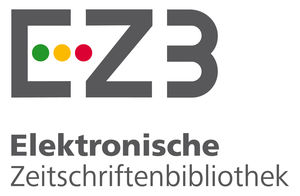On using the ATD: Some clarifications and comments
DOI:
https://doi.org/10.23925/1983-3156.2019v21i4p001-017Palabras clave:
Genesis, structure, theorical and practical, anthropological theory of the didacticResumen
The main purpose of this opening lecture is to clarify and comment on a number of aspects of the genesis, structure and use of the ATD that I believe deserve clarification. The current weight of common opinion in didactics, in fact, has sometimes led either to the forgetting of certain key elements of the anthropological theory of the didactic, or to a somewhat limited understanding of what it implies. The most visible effect of this phenomenon is the fact that the theoretical and practical use of the theory does not always seem optimal. In the following, I have therefore tried to identify and cope with a selection of these difficulties of reception, that I felt it was possible to address in a meaningful way in the context of this presentation.
Cet exposé inaugural a pour ambition principale de préciser et de commenter un certain nombre d’aspects de la genèse, de la structure et de l’utilisation de la TAD qui m’ont semblé mériter des éclaircissements. Le poids actuel de la doxa en matière de didactique, en effet, a parfois induit soit l’oubli de certains éléments clés de la théorie anthropologique du didactique, soit une compréhension un peu limitée de ce qui la constitue. L’effet le plus visible de ce phénomène tient dans une mise en oeuvre de la théorie dont le rendement théorique et pratique ne semble pas toujours optimal. Dans ce qui suit, je me suis donc efforcé de repérer et de « traiter » une sélection de ces difficultés de réception, qu’il m’a semblé possible d’aborder de manière significative dans le contexte où mon propos trouve sa place.
Citas
Phaedon.
GYROVAGUES. (n.d.). In Wikipedia. Retrieved January 17, 2016, from https://en.wikipedia.org/wiki/Gyrovagues
KAPLAN, A. (1998). The conduct of inquiry: Methodology for behavioral science. New
BRUNSWICK (U.S.A.): Transaction Publishers. (Original work published 1964)
Lawless, L.K. (2016). AI and AIS. French pronunciation. Retrieved from https://www.lawlessfrench.com/pronunciation/ai/
LEVI-STRAUSS, C. (1952). Race and history. Paris: Unesco.
TWAIN, M. (1979). Notebook 22 (Spring 1883-September 1884). In R.P. Browning, M.B. Franck & L. Salano (Eds.), Mark Twain’s Notebooks & Journals, vol. III (pp. 1-62). Oakland, CA: University of California Press.
WHITLEY, B. E., Jr., & Kite, M. E. (2013). Principles of research in behavioral science. New York: Routledge.
Descargas
Publicado
Cómo citar
Número
Sección
Licencia
Autores que publicam nesta revista concordam com os seguintes termos:- Autores mantém os direitos autorais e concedem à revista o direito de primeira publicação, com o trabalho simultaneamente licenciado sob a Licença Creative Commons Attribution que permite o compartilhamento do trabalho com reconhecimento da autoria e publicação inicial nesta revista.
- Autores têm autorização para assumir contratos adicionais separadamente, para distribuição não-exclusiva da versão do trabalho publicada nesta revista (ex.: publicar em repositório institucional ou como capítulo de livro), com reconhecimento de autoria e publicação inicial nesta revista.
- Autores têm permissão e são estimulados a publicar e distribuir seu trabalho online (ex.: em repositórios institucionais ou na sua página pessoal) a qualquer ponto antes ou durante o processo editorial, já que isso pode gerar alterações produtivas, bem como aumentar o impacto e a citação do trabalho publicado (Veja O Efeito do Acesso Livre).













